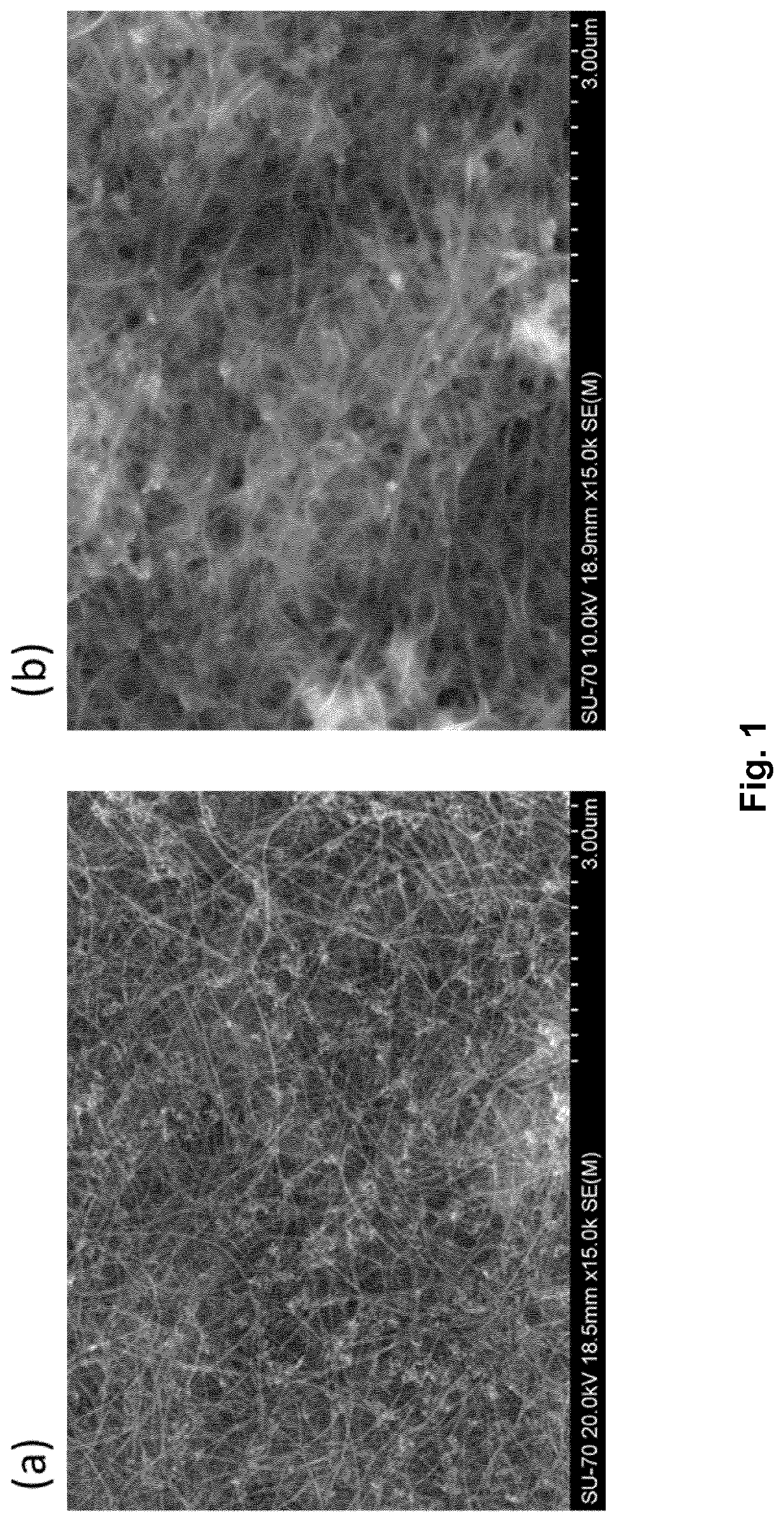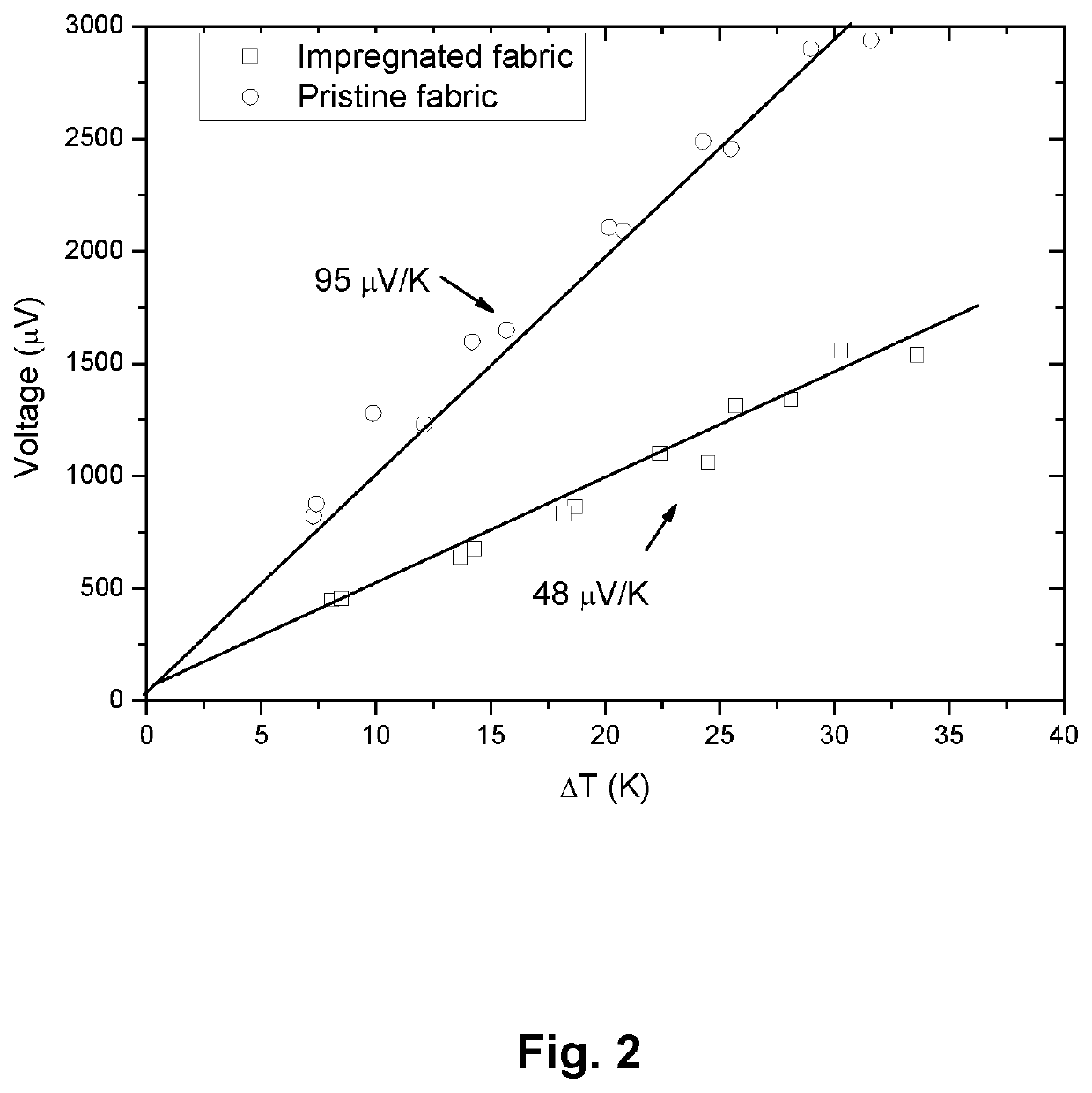Improvements relating to thermoelectric materials
a thermoelectric material and thermoelectric technology, applied in the field of thermoelectric materials, can solve the problems of low thermoelectric efficiency of some such materials, high production cost, and difficulty in producing large-scale devices, and achieve the effect of improving the thermoelectric properties of composite materials
- Summary
- Abstract
- Description
- Claims
- Application Information
AI Technical Summary
Benefits of technology
Problems solved by technology
Method used
Image
Examples
Embodiment Construction
Sample Preparation—Fabric
[0064]In a non-limiting example, a non-woven unidirectional fabric was produced by winding fibres of carbon nanotubes onto a bobbin and densifying the material with a solvent. In an example particularly relevant for industrialisation, such a fabric was produced from carbon nanotube fibres that were directly collected from the gas-phase during their synthesis by chemical vapour deposition, as described in EP2615193B1, EP2631330B1 and EP2631331A1. Briefly, this method of preparing the carbon nanotube fibres involves the production of a carbon nanotube agglomerate, comprising the steps of: passing a flow of one or more gaseous reactants into a reactor; reacting the one or more gaseous reactants within a reaction zone of the reactor to form an aerogel; agglomerating the aerogel into an agglomerate; and applying a force to the agglomerate to displace it continuously away from the reaction zone.
[0065]The porous nature of fibres of carbon nanotubes formed from said...
PUM
| Property | Measurement | Unit |
|---|---|---|
| thermoelectric | aaaaa | aaaaa |
| specific surface area | aaaaa | aaaaa |
| temperature | aaaaa | aaaaa |
Abstract
Description
Claims
Application Information
 Login to View More
Login to View More - R&D
- Intellectual Property
- Life Sciences
- Materials
- Tech Scout
- Unparalleled Data Quality
- Higher Quality Content
- 60% Fewer Hallucinations
Browse by: Latest US Patents, China's latest patents, Technical Efficacy Thesaurus, Application Domain, Technology Topic, Popular Technical Reports.
© 2025 PatSnap. All rights reserved.Legal|Privacy policy|Modern Slavery Act Transparency Statement|Sitemap|About US| Contact US: help@patsnap.com



